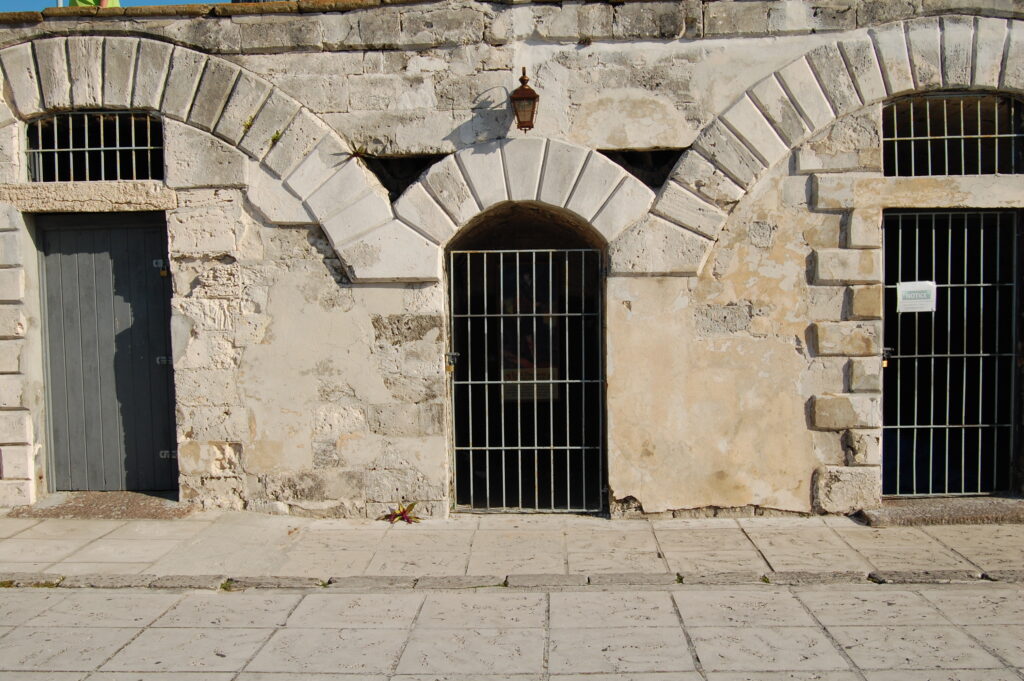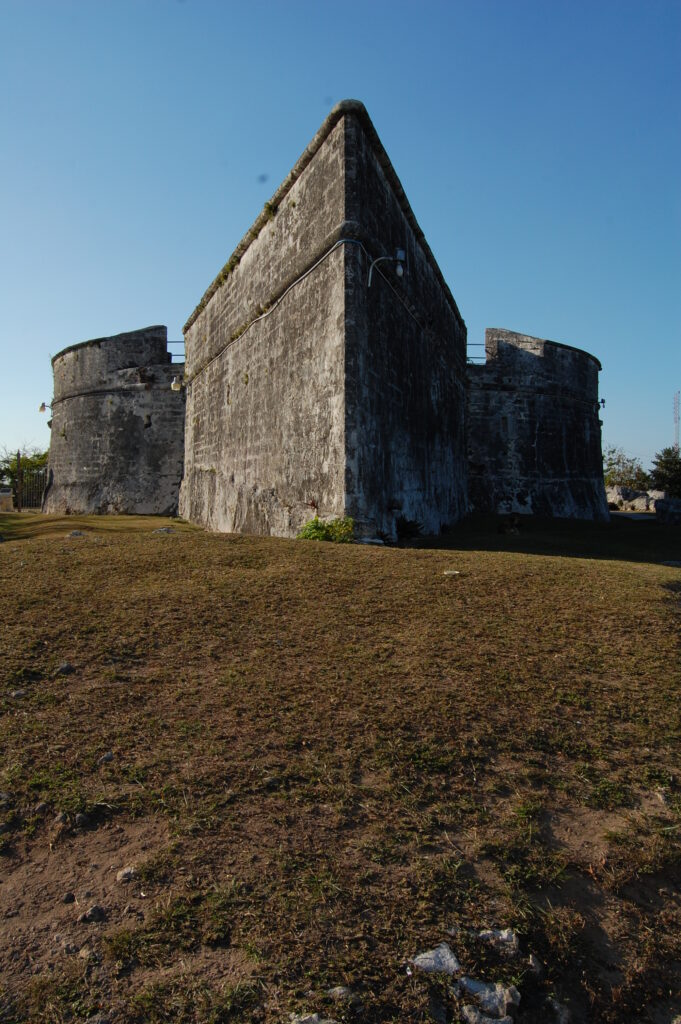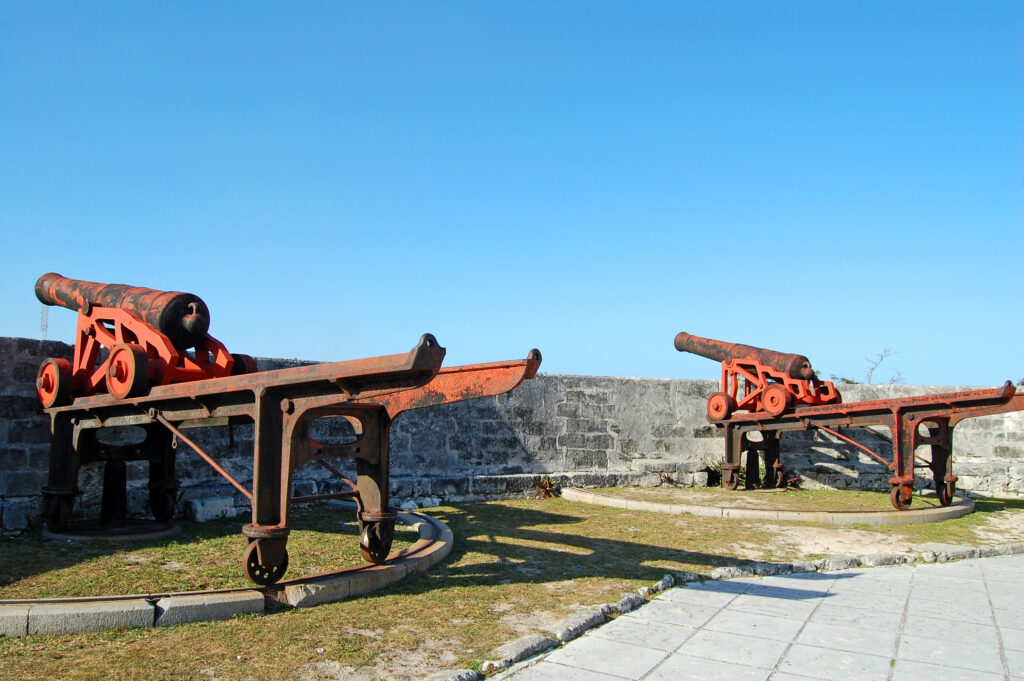Located atop Bennet’s hill overlooking the city of Nassau lies Fort Fincastle built by Lord Dunmore to protect the City.
Not only is there a fort but there are two other historic sites clustered together. The Queen’s Stair Case and the Water tower.
These three sites make a visit to the area a unique experience considering there are some little known secrets of Bennett’s Hill and Fort Fincastle.
Who built Fort Fincastle?
Built sometime between 1789 – 1799 Fort Fincastle can be considered the third oldest fort on the island of New Providence behind For Nassau build in 1697 and Fort Montagu built in 1741.

The fort was built under the request of lord Dunmore who served as governor of the Bahamas form 1787 to 1796. John Murray, is the name of Lord Dunmore as Dunmore is a title.
As of 2023 this makes Fort Fincastle 224-234 years old.
Although the fort was commissioned by Lord Dunmore there is some controversy surrounding how the fort was built.
One claim states that Lord Dunmore used slaves to quarry the hill area located by the Queen’s stair case however the sheer depth of the gully versus the size of the fort does not equate to the same size.
Another claim states that the gully area of the queens staircase was used however much of the lime stone was used for other buildings in the city of Nassau, such as building of the Gaol aka The Public Library which corresponds with the same timeline as the fort.
What is known is that the building of the fort took 16 years and may have used over 600 slaves to quarry out the limestone used to build the fort.
The fort is said to be shaped like a paddle steamer but it more resembles an old flat iron however from above it more resembles an ice cream cone. the paddle steamer shape is not one that can be easily seen by modern eye sight.
Where does Fort Fincastle get its name?
Fort Fincastle is said to be named after the second title given to Lord Dunmore ,Viscount Fincastle. This title Earl and viscount Fincastle was bestowed to a few persons in history and it could have been misconstrued as being used for John Murray, 4th Earl of Dunmore.
In fact Lord Dunmore name is actually John Murray. Dunmore is a place located in Scotland where John Murray was born. Earl of Dunmore is given as a peer title, Peerage, to the upper class of Scotland.
At present the 12 Earl of Dunmore is Malcom Murray. The name John Murray was used 3 times in the earls of Dunmore and the second title of Viscount Fincastle may have been misplaces with one of the other two John Murrays.
Nevertheless John Murray the 4th earl of Dunmore is known as Lord Dunmore in the Bahamas, Virginia and New York.
Is the fort an actual fort or a battery?
In technical form Fort Fincastle is not really a fort but an artillery battery. This can be debated when you consider its location atop Bennet’s hill.
A fort is typically a fortified military structure designed to house troops and has a number of defenses designed to keep the enemy from over running the installation.
A military battery is designed as a fortification often used in conjunction with another battery or fort as a strategic stance often placed within firing range of each other for back up.
Fort Fincastle design makes it hard to house troops and it is not fortified to prevent enemy troops from capturing it. However the hill itself could have been considered the defense for the fort but this is only speculation.
The most likely type of military installation would be a battery. In fact history accounts that Lord Dunmore also mentioned it in one of his letters.
Lord Dunmore wrote In a letter to the Secretary of State, dated February 17, 1794 – “a battery upon a hill in this island to the Eastwards of the Government House” When considering that there was a military battery located on Hog Island it makes more sense that Fort Montagu would actually be military battery Fincastle

Why is Fort Fincastle important?
The hill where the fort is built is known as Bennett’s hill origin of its name is unknown. This hill is the highest point nearest to the city of Nassau.
The city of Nassau is bounded on the east by East Street and on the West by West street now known as Baillou Hill/Marbourough street. The Fort sits outside these boundaries but if you take a look at the direction the canons are pointing they were placed to protect the city.
This major detail gives an indication of the importance of Fort Fincastle as a protector to the city of Nassau.
This may have been over kill as Fort Montagu and a battery on Hog Island protected the eastern entrance to the Harbour however Fort Nassau was closer to the city and protected it for close quarters.
The fort saw little to no action and was used as a light house up until 1817 when the lighthouse was built on Hog Island.
How did Fort Fincastle defend the city of Nassau.
The fort was originally out fitted with larger cannons but over time smaller more nimble canons were uses. It has been recorded as holding 2 – 32-pound canons, 2 – 12 pound guns and one 8-inch howitzer.
Later in 1859 it was recorded that the weaponry was reduced to 3 – 18 pound guns and 2 – 10 inch Howitzer. These are said to be the canons that can be seen at the fort today.
For more information on canon size see the information on Cannon ball size.
The position of the canons make it easy to protect the city and part of government house as they all point to the west of the fort.
The hill on which the fort sits also had a steep incline making it hard for enemies to gain access to the fort.



What’s the best way to see Fort Fincastle?
According to some visitors on Trip advisor the fort is not much of an excitement and I would agree however it all depends on how and who you visit the historic site with.
Most often having a guide with you will make the visit a lot more enjoyable as they can give you a proper tour and history of the fort it self.
Self guided tours are welcomed but its best to tip one of the narrators that are present at the area and can give you a better appreciation for the fort.
To gain entrance to the actual for is a nominal fee of $2.00 that is collected by the stewards of the fort the AMMC (Antiquities Monuments & Museum Corporation).
